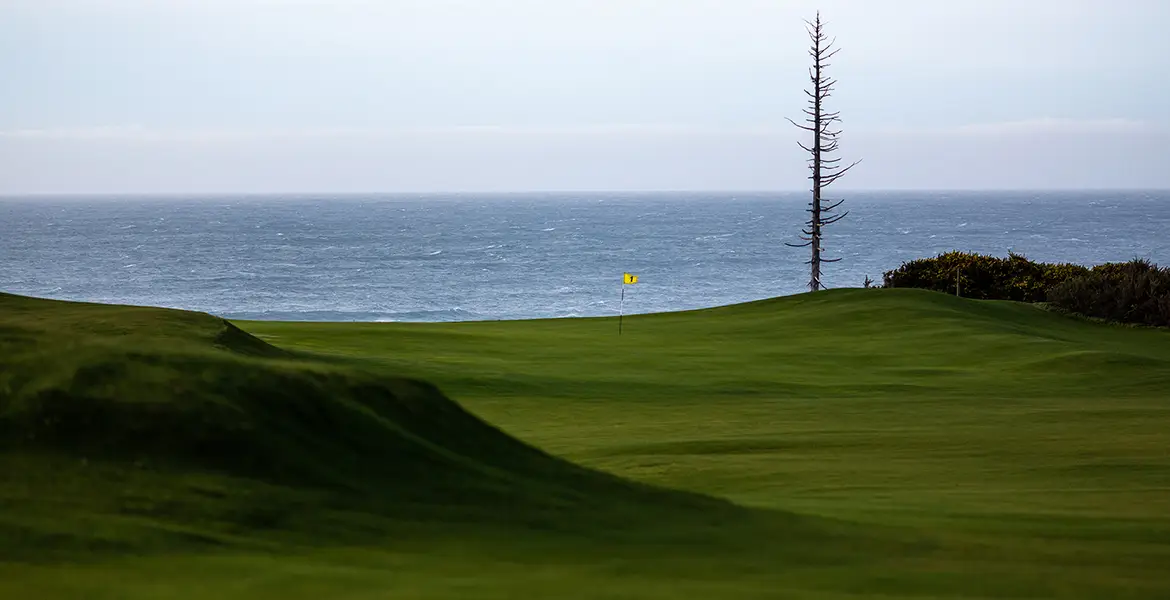
It all began with four men in a boat. The year was 1887, in the small village of Malahide just north of Dublin, Ireland. The crew was comprised of a lawyer, a brewery owner and two bankers. They were good friends, this intrepid foursome, confirmed bachelors and golf addicts. For some time, each had gazed longingly across the estuary from Malahide towards a vast wilderness of sand dunes situated on a peninsula of land just half a mile in the distance, and wondered if it might be possible to create a links course on the spectacular looking site. Naturally with this group, curiosity won the day.
Perhaps back then there was nothing bizarre in the notion of men rowing across a sometimes choppy estuary in order to play a round of golf (by land the journey was difficult as well as lengthy). Yet only in Ireland could such a mode of transport continue as the normal means of access to their course until 1973.
From the instant they set foot on their island sanctuary, the pioneering four realized they had discovered something special. Six kindred souls were let in on the secret and in 1890 it was this group of 10 men, calling itself “the Bachelors,” that founded the club. Within a few years, however, the inevitable happened: Several of the cast got married, so the group restyled itself as “the Syndicate.” A club membership developed and the Island became visitor-friendly. It was this elite body and its appointed successors which ran the affairs of the Island Golf Club for more than 60 years.
Geographically, The Island is situated close (and is metaphorically overshadowed by) Portmarnock and Royal Dublin; physically, however, the land has much more in common with the rugged links of southwest Ireland. Rather flatteringly, the Island has been described as “the Lahinch of the east coast.”
It certainly possesses more than a hint of that great course’s majesty and, yes, its quirkiness, too. Towering sand hills dominate much of the terrain and when they aren’t in evidence, great swathes of marram grass and tangling scrub run amok. The founding bachelors had no means and possibly no inclination to tame the landscape, thus they built their course among—occasionally routing over—the dunes. The Island, more than any other links course in Ireland, simply evolved.
In 1973 British architect Fred Hawtree was commissioned to “reorganize” the links. His mission was liberal in scope, for though it required him to retain the distinctive character of the course, he was invited to make whatever changes he considered necessary to “modernize” it. Nothing ever happens in a hurry at the Island, and it took the better part of two decades for all the changes to be implemented.
In addition to some subtle tinkering, seven new holes were constructed. On the front nine the variety among the par 4 holes is exceptional. The glory of the back nine is the sequence between the 12th and 15th, a run of holes which tours the tip of the peninsula. It comprises a strong dogleg left to a fiercely defended and sharply sloping green; a superb, long par 3 played over humps and hollows to a green perched precariously on bluffs overlooking the estuary; an arrow-straight par 4 of little more than 300 yards but where the landing area of the tee shot is all of 13 paces wide—possibly the narrowest fairway in golf—and a marvelous roller coasting par 5 that twists and tumbles its way towards a green backed by a range of massive sand hills known as “the Andes.”
Boatmen, bachelors and golfing purists—be forewarned: The myriad charms of the Island await your discovery.






